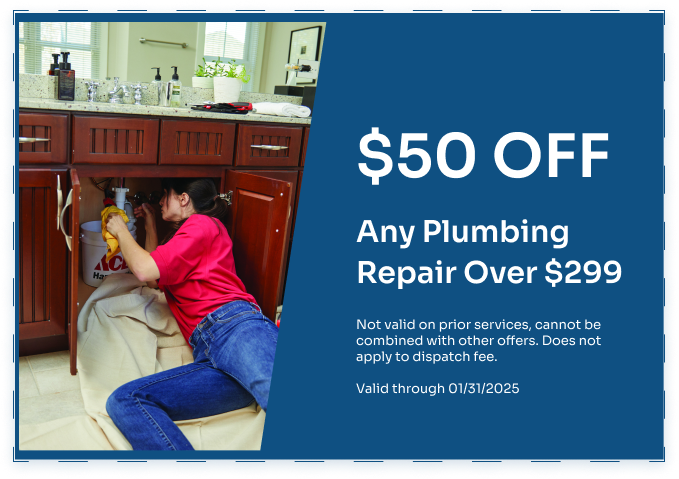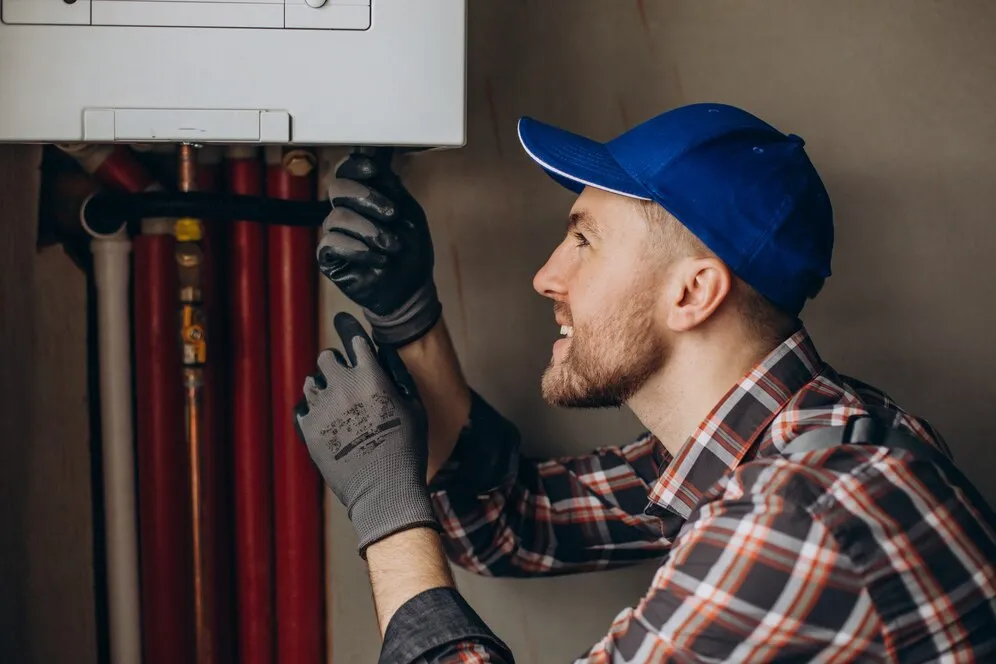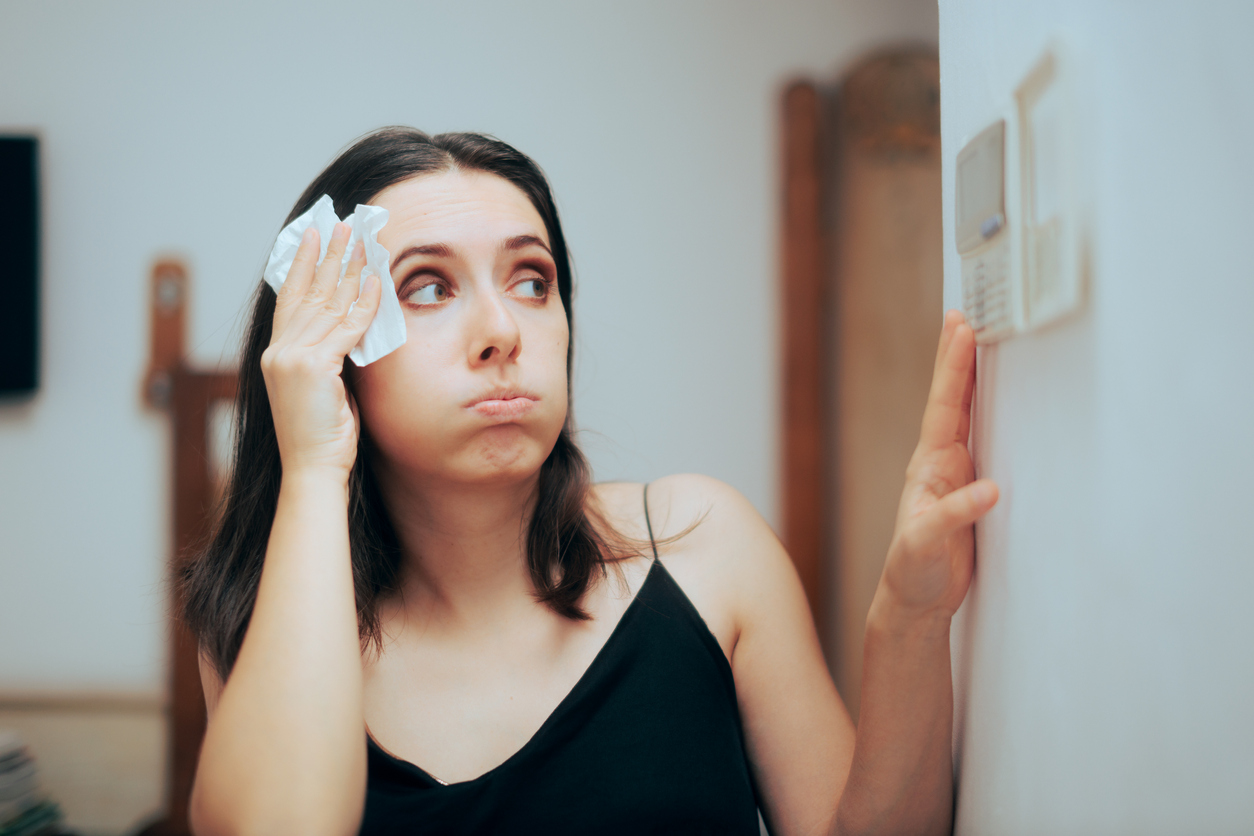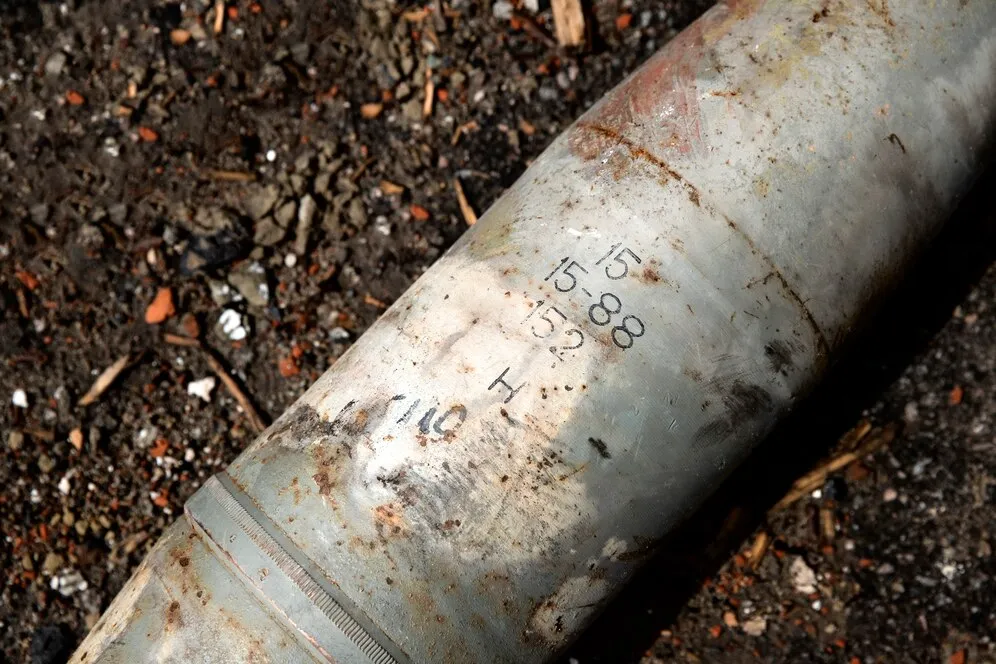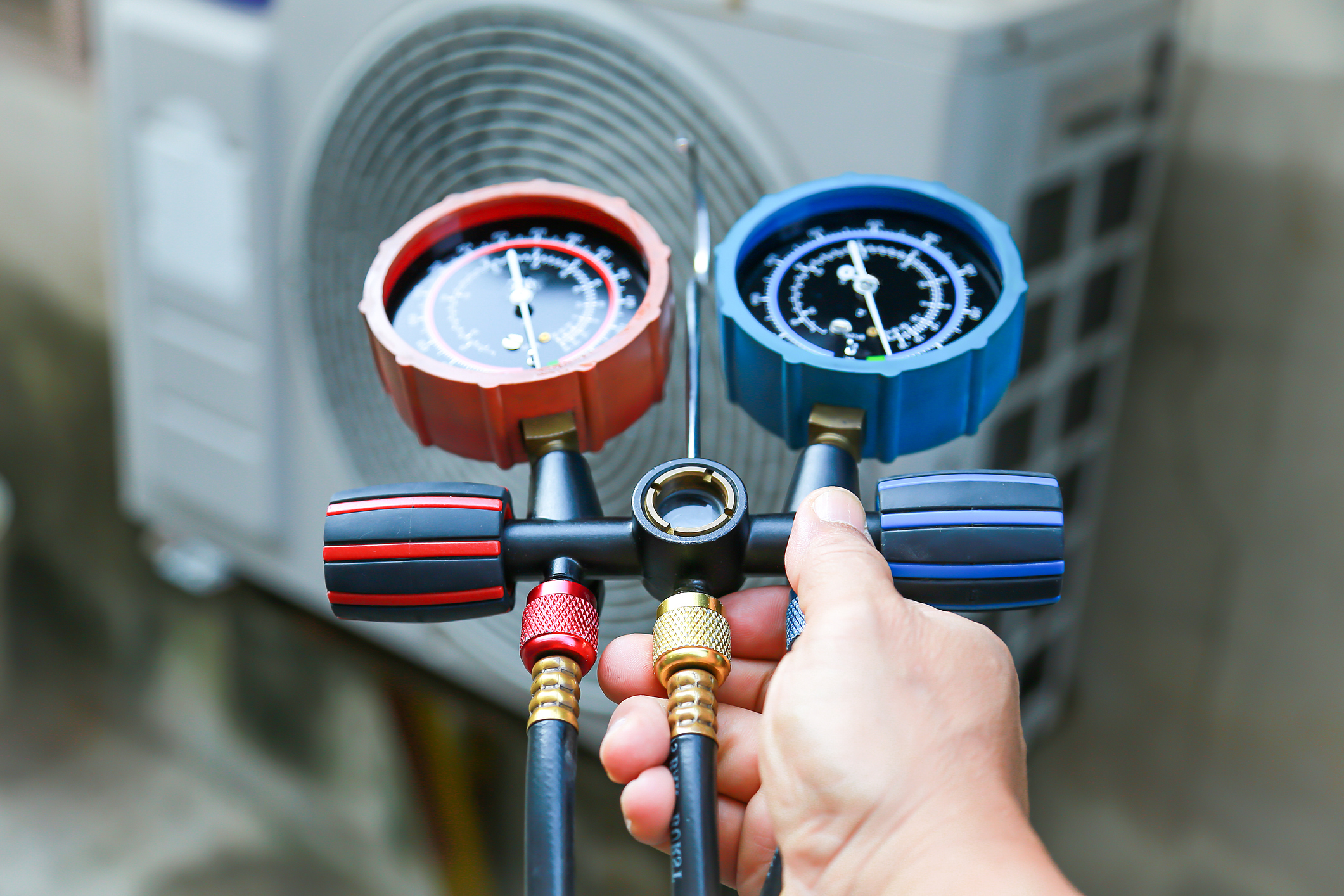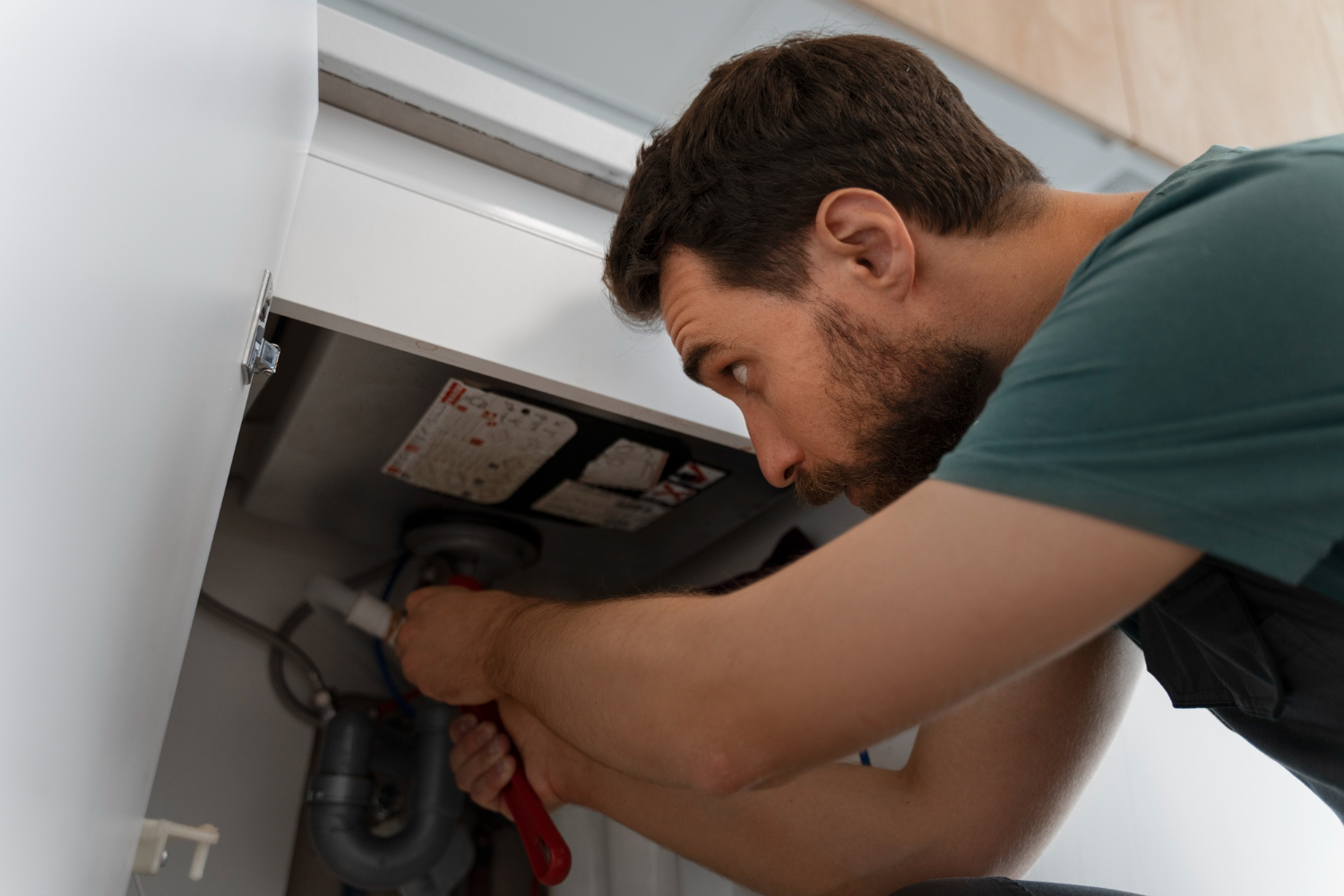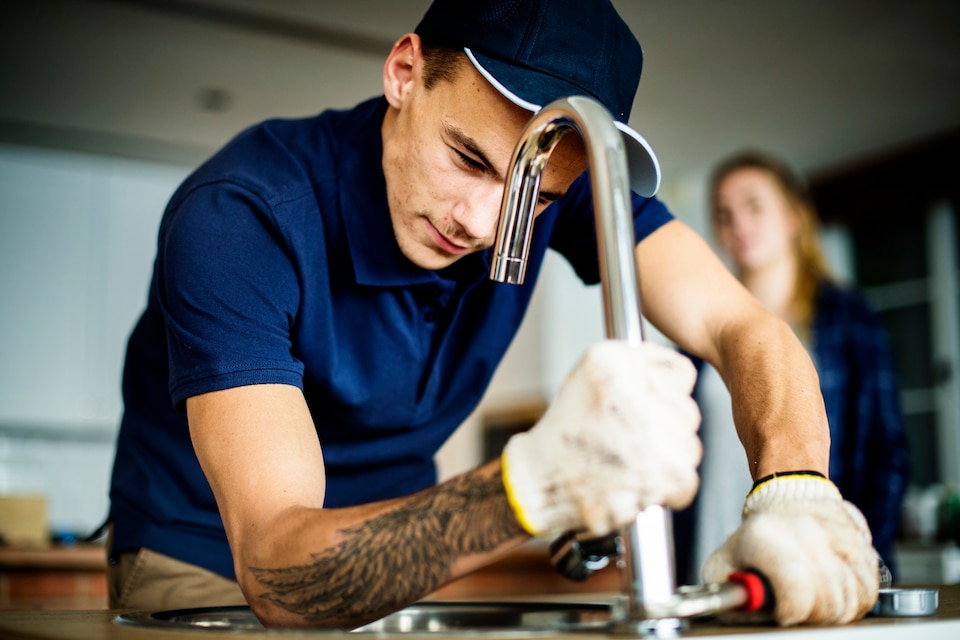A well-functioning furnace is essential for maintaining a comfortable home, especially during the colder months. When your furnace encounters problems, it can lead to reduced efficiency or even complete breakdowns. Understanding common furnace issues and knowing how to address them can help you keep your heating system in top condition.
Understanding the Importance of Timely Furnace Repair
Timely furnace repair is essential for several reasons, including efficiency, safety, and cost-effectiveness. Addressing issues as they arise prevents small problems from escalating into major ones.
- Efficiency: A furnace that operates efficiently uses less energy, resulting in lower utility bills. When components wear out or malfunction, the system must work harder to heat your home, consuming more energy. Timely repairs ensure your furnace runs smoothly and efficiently.
- Safety: Furnaces, especially those that run on gas, can pose safety risks if not properly maintained. Issues like gas leaks or carbon monoxide emissions can be hazardous. Regular repairs and inspections help detect and address potential safety concerns.
- Cost-Effectiveness: Ignoring minor issues can lead to more extensive damage, requiring costly repairs or even a full system replacement. Timely furnace repair saves money by addressing problems before they worsen.
Our professionals recommend scheduling regular maintenance and repairs to keep your furnace running safely and efficiently.
How Your Furnace Works: A Basic Overview
Understanding how your furnace works can help you identify and address common issues more effectively. Most residential furnaces operate using a similar basic process to heat your home.
- Ignition and Combustion: Furnaces use a fuel source, typically natural gas, to ignite a burner. The combustion process generates heat, which is then transferred to the heat exchanger.
- Heat Exchanger: The heat exchanger warms the air that passes over it. This heated air is then circulated through your home’s ductwork, delivering warmth to each room.
- Blower Motor: The blower motor powers a fan that moves the heated air from the heat exchanger into the ducts. It helps distribute the warm air evenly throughout your home.
- Thermostat: The thermostat monitors the temperature in your home and signals the furnace to turn on or off to maintain the desired temperature. It acts as the control center for your heating system.
This basic overview helps you understand the key components involved in heating your home. Familiarity with these parts can make it easier to recognize when something is wrong and requires furnace repair.
Common Furnace Problems: An Informative Guide
Several common issues can affect the performance of your furnace. Being aware of these problems can help you detect issues early and seek timely furnace repair.
- No Heat: If your furnace isn’t producing heat, it could be due to a malfunctioning thermostat, ignition problems, or issues with the fuel supply. Checking these components can help identify the source of the problem.
- Insufficient Heat: When your furnace produces some heat but not enough to warm your home, it may be due to dirty filters, blocked vents, or a malfunctioning blower motor. Regular maintenance can prevent these issues.
- Frequent Cycling: A furnace that frequently turns on and off may have problems with the thermostat, filters, or airflow. Short cycling reduces efficiency and increases wear on the system.
- Unusual Noises: Banging, clanking, or squealing noises indicate mechanical issues. These could range from loose components to failing motors. Addressing these noises promptly can prevent more significant damage.
- Pilot Light Problems: A pilot light that won’t stay lit or burns yellow instead of blue can indicate issues with the ignition or fuel supply. Professional inspection and repair are essential for resolving these problems.
Recognizing these common furnace problems allows you to seek timely repairs, ensuring efficient and reliable heating throughout your home.
Assessing Poor Airflow Issues
Poor airflow is a common furnace problem that can affect the efficiency and comfort of your home. Identifying and addressing the causes of poor airflow is crucial for optimal furnace performance.
- Dirty Air Filters: One of the most common causes of poor airflow is clogged air filters. Dirty filters restrict airflow, making the furnace work harder to circulate air. Replacing or cleaning the filters regularly can improve airflow and efficiency.
- Blocked Vents and Ducts: Obstructions in the vents or ductwork can hinder airflow, leading to uneven heating. Checking for and removing any blockages helps ensure proper air circulation.
- Blower Motor Issues: A malfunctioning blower motor can result in insufficient airflow. Inspecting the blower motor for signs of wear or damage and replacing it if necessary helps maintain proper airflow.
- Leaky Ducts: Air leaks in the ductwork can reduce the amount of warm air reaching your living spaces. Sealing any leaks in the ducts helps improve airflow and ensures even heating throughout your home.
Addressing poor airflow issues promptly helps maintain the efficiency and effectiveness of your furnace. Our professionals can diagnose and fix these problems, ensuring your home stays warm and comfortable.
Diagnosing Thermostat Problems
Thermostat problems can disrupt the operation of your furnace, leading to discomfort and higher energy bills. Diagnosing and fixing these issues helps maintain consistent heating in your home.
- Unresponsive Thermostat: If the thermostat fails to respond to adjustments, check if it’s getting power. Replace the batteries if needed. Ensure the thermostat is set to the correct mode (heat) and temperature.
- Incorrect Temperatures: When the thermostat displays incorrect temperatures, it may need recalibration. Place a thermometer near the thermostat to verify accuracy. If the readings differ significantly, recalibrate or replace the thermostat.
- Wiring Issues: Loose or damaged wires can impede communication between the thermostat and the furnace. Inspect the wiring connections for any signs of wear or looseness. If you’re unsure, our professionals can handle the repair.
- Location Matters: Placement affects the thermostat’s performance. Avoid placing it near heat sources, direct sunlight, or drafty areas. Improper placement can lead to incorrect temperature readings and inefficient furnace operation.
Addressing thermostat problems promptly ensures accurate temperature control, making your home comfortable and energy-efficient.
Dealing with Unusual Furnace Noises
Unusual noises coming from your furnace often indicate mechanical issues that need attention. Identifying the source of the noise can help you diagnose the problem and seek the necessary repairs.
- Banging or Clanking: These sounds typically signal loose or broken internal components. Check for loose panels or parts within the furnace. If you find anything loose, tighten it or call our technicians to secure or replace it.
- Squealing or Screeching: High-pitched noises are usually due to worn-out belts or motor bearings. Inspect the blower motor and belts. If they appear worn or damaged, replace them.
- Rattling Sounds: Rattling often points to debris caught in the blower fan or loose ductwork. Remove any debris and secure any loose duct sections.
- Popping or Booming: This noise can indicate delayed ignition within the furnace. Ensure the burners are clean and the gas supply is steady. This issue can be hazardous, so contact our professionals if the problem persists.
Identifying and addressing these unusual noises early can prevent further damage and ensure your furnace operates smoothly.
Detecting and Fixing Pilot Light Issues
Pilot light issues can cause your furnace to stop producing heat, affecting your home’s comfort. Identifying and fixing these problems ensures reliable operation.
- Pilot Light Won’t Stay Lit: If the pilot light keeps going out, check for drafts around the furnace. Drafts can blow out the flame. Ensure the area is draft-free and inspect the thermocouple, which senses the flame and keeps the gas valve open. If it’s dirty or worn out, clean or replace it.
- Yellow Pilot Light: A pilot light should burn blue. A yellow flame indicates improper combustion, often due to a dirty burner or lack of oxygen. Clean the burner and ensure adequate ventilation around the furnace.
- Ignition Problems: If you have a newer furnace with an electronic ignition, ensure the igniter is clean and functioning. Dirt or damage can prevent the igniter from lighting the pilot. Replace the igniter if necessary.
- Gas Supply Issues: Ensure the gas supply valve is open and there’s no interruption in service. A restricted gas flow can prevent the pilot light from staying lit. Have our professionals inspect the gas lines for blockages.
Regular maintenance and prompt attention to pilot light issues keep your furnace running efficiently and safely.
Addressing Frequent Cycling in Furnaces
Frequent cycling, where the furnace turns on and off repeatedly, can be disruptive and reduce efficiency. Understanding and addressing the causes helps maintain consistent heating and extends the system’s life.
- Thermostat Placement: A thermostat located near a heat source or draft may cause short cycling. Ensure the thermostat is in a central, neutral location away from drafts and heat sources.
- Dirty Air Filters: Clogged filters restrict airflow, causing the furnace to overheat and shut down frequently. Replace or clean filters regularly to ensure proper airflow and prevent short cycling.
- Oversized Furnace: An oversized furnace can heat your home quickly but shut down just as fast, causing frequent cycling. This issue may require a professional assessment to determine if resizing or zoning is needed.
- Malfunctioning Blower Motor: If the blower motor isn’t working correctly, it can cause short cycling. Inspect the motor for signs of wear or damage and replace it if necessary.
- Blocked Vents or Ducts: Obstructions in the vent system can cause overheating and frequent cycling. Ensure all vents and ducts are clear and free of obstructions.
Frequent cycling affects furnace efficiency and can lead to premature wear. Addressing these issues ensures smoother and more efficient operation, keeping your home warm without interruptions.
Troubleshooting Blower Motor Malfunctions
The blower motor is a key component of your furnace, responsible for circulating air throughout your home. When it malfunctions, it can lead to poor heating performance and increased energy costs.
Signs of Blower Motor Issues:
- Weak Airflow: If you notice that the airflow from your vents is weak, this could indicate a problem with the blower motor. Weak airflow often results from a worn-out motor or a buildup of debris.
- Unusual Noises: A grinding or squeaking noise coming from your furnace may signal that the blower motor bearings are worn out. Addressing these noises promptly can prevent more serious damage.
- Frequent Cycling: If your furnace repeatedly turns on and off, it could be due to an overheating blower motor. This often occurs when the motor is working too hard, or there are airflow restrictions.
DIY Troubleshooting Steps:
- Inspect and Clean: Turn off your furnace and inspect the blower motor for dust and debris. Clean the motor and surrounding areas to ensure there are no obstructions.
- Check the Belt: If your blower motor uses a belt to drive the fan, inspect it for wear and tear. A cracked or loose belt can hinder the motor’s performance and should be replaced.
- Lubricate Movable Parts: Some blower motors have oil ports. Lubricate these parts to reduce friction and improve motor function.
If these troubleshooting steps don’t solve the problem, it’s best to call our professionals for a thorough inspection and repair.
Recognizing and Repairing Heat Exchanger Cracks
The heat exchanger in your furnace plays a critical role in transferring heat from the combustion chamber to the air in your home. Cracks in the heat exchanger can be dangerous and should be addressed immediately.
Symptoms of a Cracked Heat Exchanger:
- Soot Buildup: Soot around your furnace or inside the burner compartment can suggest that the heat exchanger is cracked. This occurs due to incomplete combustion, leading to inefficient heating.
- Unusual Odors: A strong, unpleasant odor, similar to formaldehyde, may indicate a crack in the heat exchanger. This odor comes from the combustion gases leaking into your home.
- Carbon Monoxide Alarm: One of the most serious signs is the activation of a carbon monoxide detector. Carbon monoxide leaks from a cracked heat exchanger pose severe health risks.
Steps to Address the Issue:
- Turn Off the Furnace: Upon suspecting a crack, turn off your furnace immediately to prevent further risks. Open windows to ventilate your home and evacuate if necessary.
- Inspect for Cracks: While some cracks might be visible, many require professional inspection tools. Our professionals can conduct a thorough examination to identify the extent of the damage.
- Repair or Replace: Depending on the severity and location of the crack, repairs might be possible. In more severe cases, replacing the heat exchanger or the entire furnace may be necessary.
Regular maintenance and timely inspections can help detect these issues early, avoiding costly repairs and ensuring your family’s safety.
Ensuring Reliable Furnace Operation Through Timely Repair
Timely furnace repair is essential for maintaining a warm and comfortable home. Addressing issues like blower motor malfunctions and cracked heat exchangers promptly can prevent more serious problems and extend your furnace’s lifespan. Taking basic troubleshooting steps can often resolve minor issues, but when professional help is needed, selecting the right service provider makes all the difference.
EnviroSafe Plumbing, Heating, Air Conditioning, Water Treatment is dedicated to providing top-notch furnace repair services. Our expert technicians, commitment to quality, and focus on safety ensure your furnace operates efficiently and reliably.
Facing furnace trouble? Contact us today for expert furnace repair in Bridgeton, NJ. Our team is ready to help you maintain a warm and comfortable home all winter long. Call us now to schedule your service!
